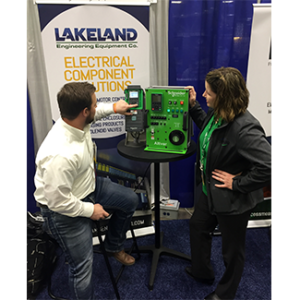How to Reduce Energy Costs with VFDs and Power Factor Correction
VFD Energy Cost Savings
Taking steps to reduce the amount of energy your business consumes provides year over year cost savings. There are multiple ways to reduce energy consumption and cost. Utility companies including Xcel Energy are also rewarding users for improving their energy usage through a rebate system. One way to save energy is by adding variable frequency drives (VFD) to your systems.
Variable frequency drives are often used to provide energy savings – most commonly on pump and fan applications. A VFD matches the load on a motor to the amount of energy needed to power that load. It converts incoming power, a fixed voltage and frequency, to a variable voltage and frequency. When a VFD alters the frequency of an AC motor, speed, flow and energy consumption are reduced in the system. This cuts energy waste and provides significant savings.
Xcel Energy is offering variable frequency drive rebates from $400-$8,000 depending on the horsepower (hp). They are also offering rebates for customers that upgrade to high-efficiency induction or permanent magnet motors. To find out what rebate program your business qualifies for, visit dsireusa.org.
Another means to provide energy cost savings is through power factor correction.

Utility Bill Savings with Power Factor Correction Capacitors
Power factor is the percentage of consumed power (KW) versus supplied power (kVA). Low power factor can waste energy and reduce efficiency which often results in a higher energy bill. When voltage and current are not in sync, AC power is not running efficiently. This is also known as Power Factor Displacement.
Low power factor or power factor displacement can often result in charges that do not equate to the power you are actually using. Some power utility companies even charge a penalty for plant loading because of this. That’s where power factor correction capacitors come in.
Benefits of power capacitors:
- Reduced electric utility bills
- Increased system capacity
- Improved voltage
- Reduced losses
Reduced utility bills
Your electric utility provides working (kW) and reactive power (kVAR) to your plant in the form of apparent power (kVA). While kVAR doesn’t register on kW demand or kW hour meters, the utility’s transmission and distribution system must be large enough to provide the total power. Utilities can charge according to the kW demand and add a surcharge or adjustment for power factor. They also have various means to add expenses including larger generators, transformers, cables, switches and more.
Increased system capacity
Power factor correction capacitors increase the system current-carrying ability. Raising the power factor on a kW load reduces kVA. With capacitors, you can add additional kW load to your system without altering the kVA.
Improved voltage conditions
Adding capacitors to your system and improving voltage allows more efficient motor performance and longer motor life.
Reduced losses
Watt-related charges can be eliminated through power factor correction as these are typically related to reactive current flowing within the system.

VFD + Power Capacitor Product Offerings
Lakeland Engineering provides a variety of VFD and power capacitor products from industry-leading suppliers including Lenze, Schneider Electric, Yaskawa, ABB, Cutler Hammer and more. For more than 60-years, Lakeland Engineering has worked hard to create significant relationships with these suppliers to provide our customers with an unrivaled level of support and product expertise.
To learn more about our VFD and power capacitor product offerings, or to request application assistance, contact Lakeland Engineering today.